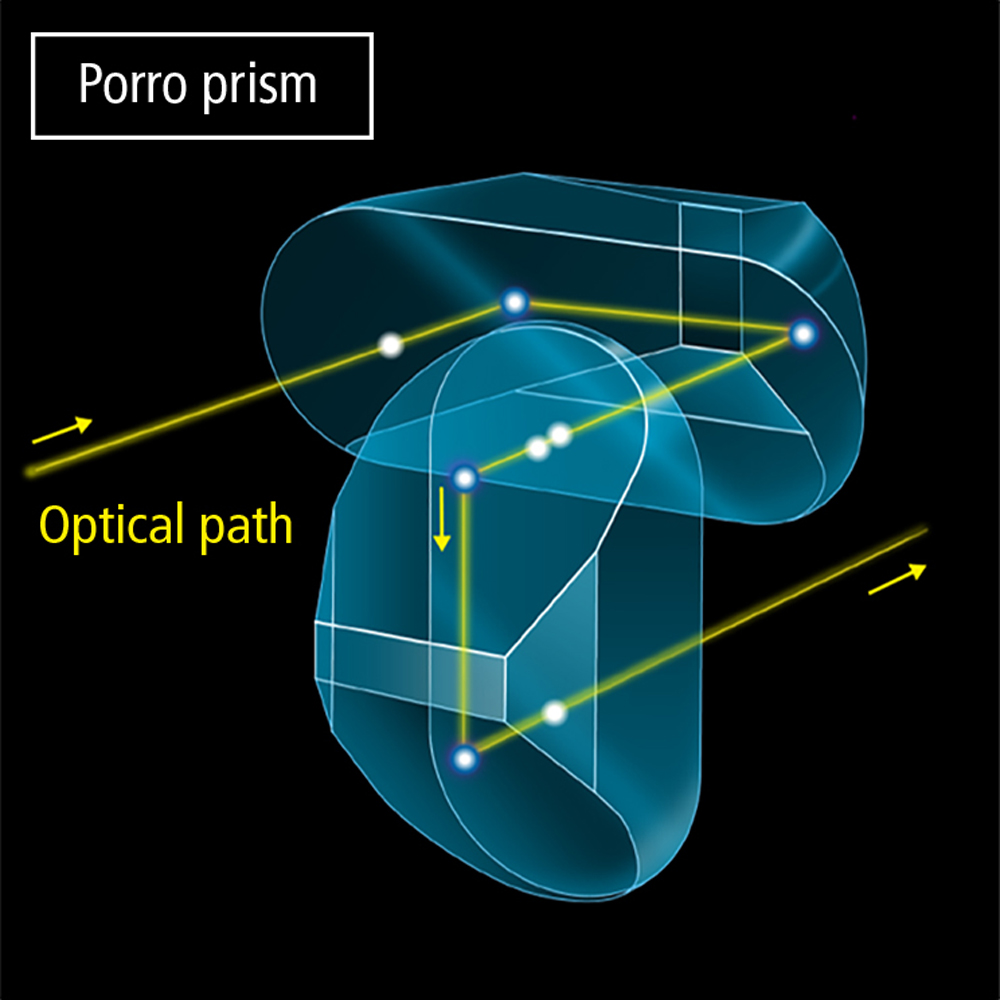Prisms of binoculars
Structure and Optical Technologies
Prism binoculars employ prisms in the optical system to rectify an inverted image projected by the objective. The prism also shortens the optical path, resulting in a compact body. There are two types of prism binoculars: Roof (Dach) prism type and Porro prism type.
Porro prism
The Porro prism was invented by Ignazio Porro in mid-19th-century Italy. All of its reflective surfaces are completely reflective, so it loses no light and such binoculars are easy to produce. However, the optical path is bent like the letter Z. Accordingly, this prism system takes up considerable space, so that binoculars with a Porro prism are larger than those with a roof (Dach) prism.

Roof (Dach) prism
Dach means roof in German and refers to the prism's roof shape.
The first prism of the roof prism system has one surface that does not feature total internal reflection, resulting in the loss of some light. To minimize this loss, it is necessary to apply coating on the surface to raise reflectivity.
Also, to produce the roof surface of the second prism that delivers sharp images without a double image or flare, highly advanced technology to process its edge precisely is required.
Because the optical path of the roof prism binoculars is straight, a slim and compact body is realized.

